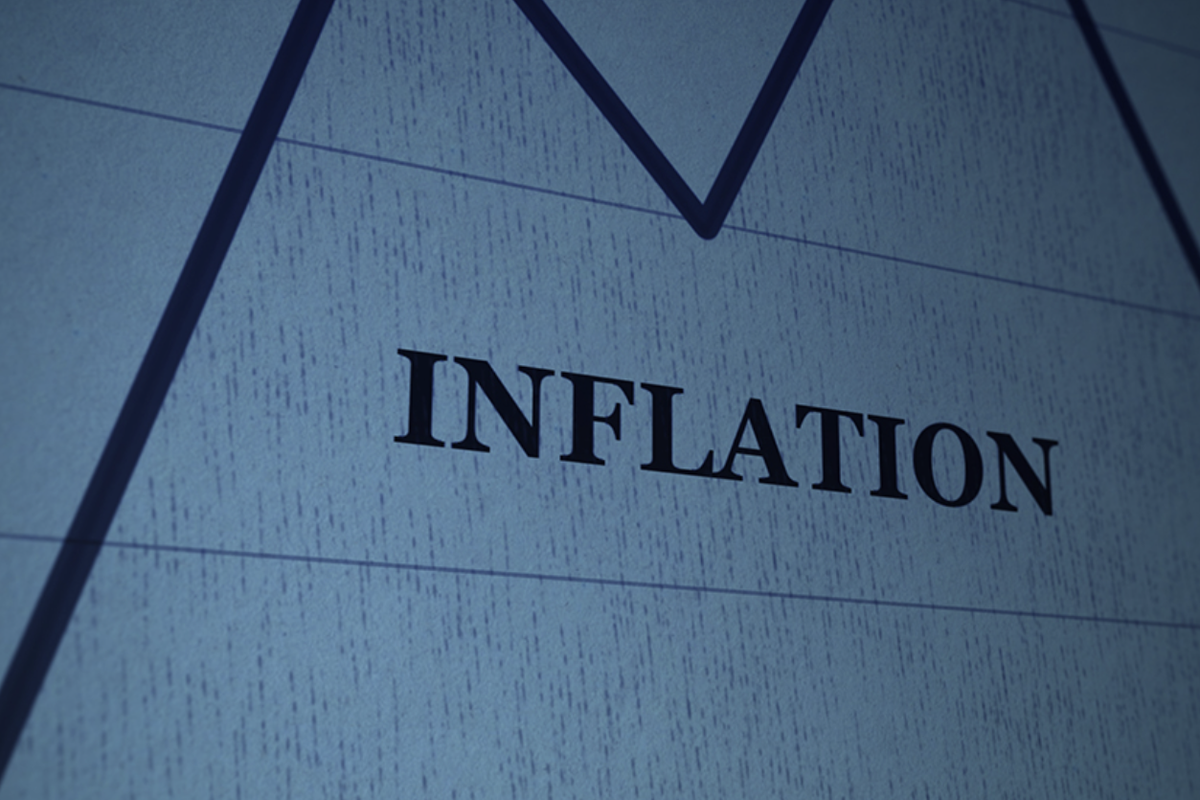[ad_1]
For investors, the past year has been dominated by one factor: inflation. Beginning in April 2021, the U.S. inflation rate began climbing rapidly. By the summer of 2022, headline inflation was above 8% while the core rate, excluding food and energy, topped 6%. This led to an abrupt change in monetary policy.
In October 2021, Fed funds futures did not price for a single rate hike over the next 12 months. One year later, the Federal Reserve (Fed) has raised rates by 300 basis points (bps) and Fed funds futures currently suggest that rates might rise by at least another 150 bps by early 2024.
The surge in inflation has been a predicament for many long-only investors, including those in the traditional 60%/40% equities-to-bonds portfolio. U.S. equities are over 25% off their highs. Prices of 30Y U.S. Treasuries have fallen by over 45% from their March 2020 highs. As such, the most important question facing many investors is what might happen to inflation? Does it go back to its pre-pandemic norm? Or will it persist?
Scan the above QR code for more expert analysis of market events and trends driving opportunities today!
The bond market offers insight into what investors are currently pricing regarding inflation. Break-even inflation spreads between Treasury Inflation-Protected Securities (TIPS) and standard U.S. Treasuries suggests that investors are pricing a return to inflation rates of around 2.5% by 2023. (Figure 1).
Figure 1: Breakeven inflation spreads on TIPS imply a rapid return to 2.5% inflation
However, one can reasonably ask: Why do investors believe that inflation will likely return to normal so quickly? And what are the upside and downside risks to that scenario implied in the breakeven inflation spreads on TIPS versus standard Treasuries?
There are numerous arguments, both in favor and against, to the idea that inflation will return rapidly to normal levels. Let’s begin with those in favor.
Arguments in Favor of Inflation Falling Back Towards 2.5% YoY
1. Supply chain disruptions contributed to inflation and they are rapidly easing. This is exemplified by the cost of shipping goods across the Pacific, which are rapidly returning to normal (Figure 2).
Figure 2: Supply chain disruptions may be easing rapidly
2. Many commodity futures curves are in backwardation, suggesting that participants in these markets anticipate lower prices for crude oil, diesel and gasoline, as well as lower prices for key agricultural commodities (Figures 3 and 4).
Figure 3: Futures traders price a likelihood of lower fuel prices ahead
Figure 4: Agricultural markets price an eventual moderation of crop prices
3. Central banks have been rapidly tightening interest rate policy and are expected to continue doing so. Investors might see central bank monetary policy as being adequately restrictive to prevent further inflation (Figure 5). Central banks are also shrinking balance sheets through quantitative tightening (Figure 6).
Figure 5: The Fed has already hiked 300bps and traders see another 150bps in the pipeline
Figure 6: Central banks are reversing QE and embarking on QT
4. U.S. government spending, which soared from 21% to 35% of GDP during the height of the pandemic, and may have triggered much of the inflation, is rapidly coming back towards pre-pandemic levels. Tax revenues are also on the rise and budget deficits are rapidly shrinking (Figure 7).
Figure 7: Government spending is rapidly declining towards pre-pandemic levels
5. The number of open positions for new hires may have peaked – possibly an early sign of an easing of labor market pressures (Figure 8).
Figure 8: The number of job listings is starting to fall rapidly in a sign of labor market easing
Arguments Against the Idea that Inflation Will Soon Moderate
1. The labor market remains very tight with job openings far exceeding the available labor supply. Moreover, wages continue to rise at over 5% per year (Figure 9), and productivity growth remains mired at low levels (Figure 10).
Figure 9: Growth in wages remains at 5% YoY and total labor income is up 8% YoY
Figure 10: Productivity growth has slowed to a crawl
2. While the Fed and other central banks have raised rates significantly, their policy rates remain far below the level of trailing inflation (Figure 11). As such, are their monetary policies really tight? Can they contain inflation with negative real rates? That approach didn’t work very well during the 1970s, although we had less extreme negative real rates during the 2010s with little apparent consequence.
Figure 11: Real rates have never been as deeply negative as they have been
3. While government spending has moderated, protectionism, onshoring and near-shoring of production are on the rise. Will the increasingly fragmented nature of world trade keep upward pressure on consumer prices? Moreover, while Trans-Pacific shipping costs have dropped, COVID restrictions in China, the Russo-Ukrainian war, OPEC+ production cuts and other factors could continue to disrupt trade.
4. Housing: 30% of the consumer price index (CPI) comprises of either rent or owners’ equivalent rent, and rents have been rising at a fast pace. Typically, rental costs follow the price of buying a home with a lag of one to two years (Figure 12). As such, the 20% rise in home prices over the past few years combined with a near-tripling of mortgage rates, could force many would-be property buyers to stay in the rental market, potentially pushing rents, and therefore CPI, higher well into 2023 and 2024.
Figure 12: Rental costs often follow the cost of buying with a lag of 1-2 years
Bottom line
Judging from break-even inflation spreads, investors anticipate a rapid normalization of inflation rates back to levels that prevailed from 1993 until 2020. While there are many factors that could be used to justify such expectations. there also appear to be plenty of upside risks. If those upside risks dominate, delaying a return to pre-pandemic rates of inflation, it could lead to further challenges for equity and bond investors.
[ad_2]
Image and article originally from www.benzinga.com. Read the original article here.

